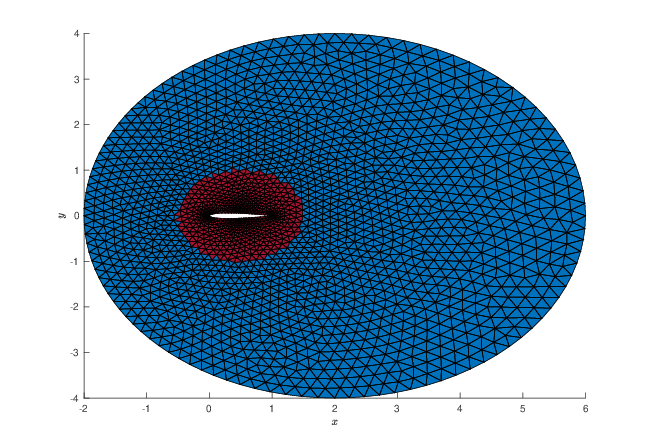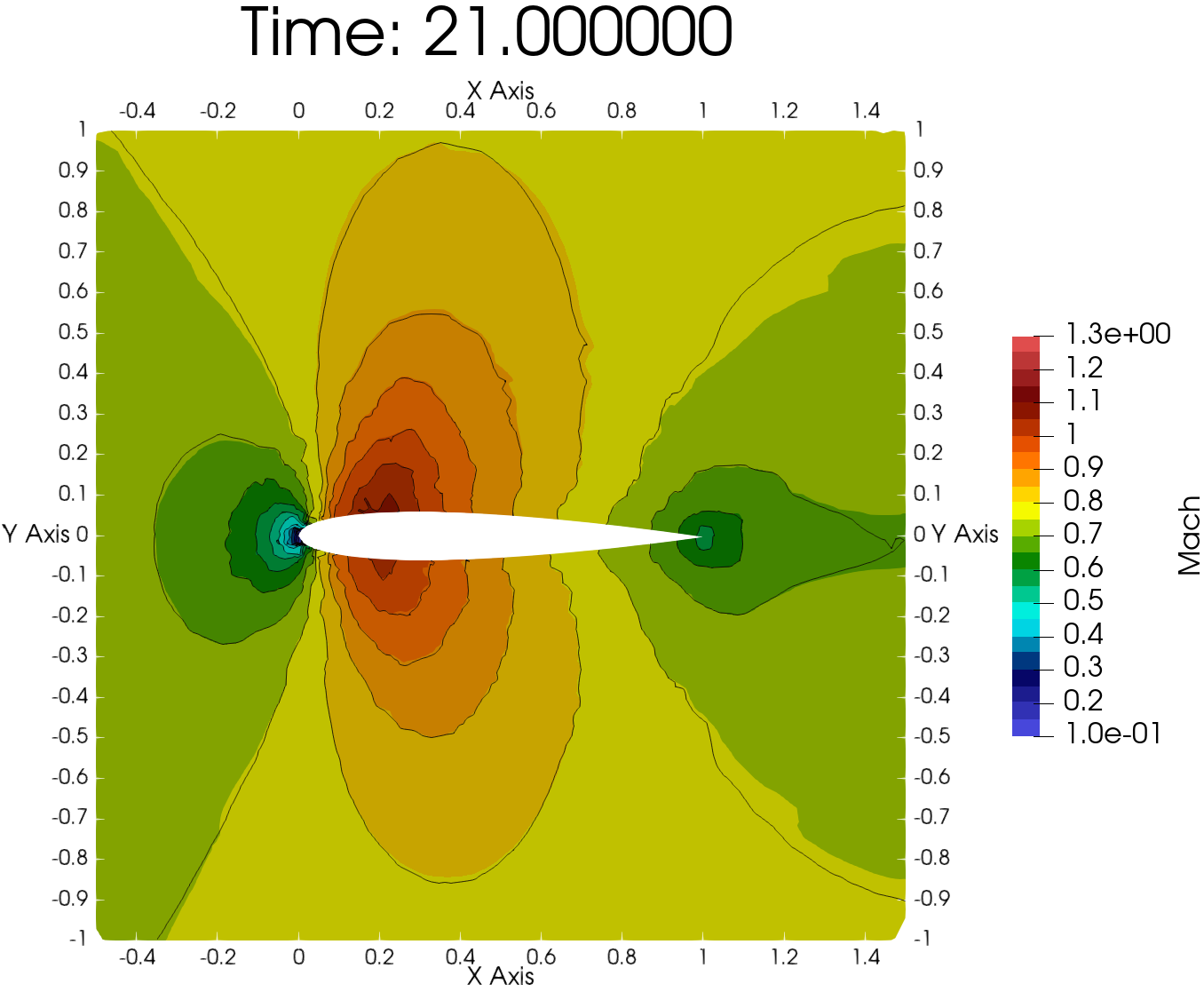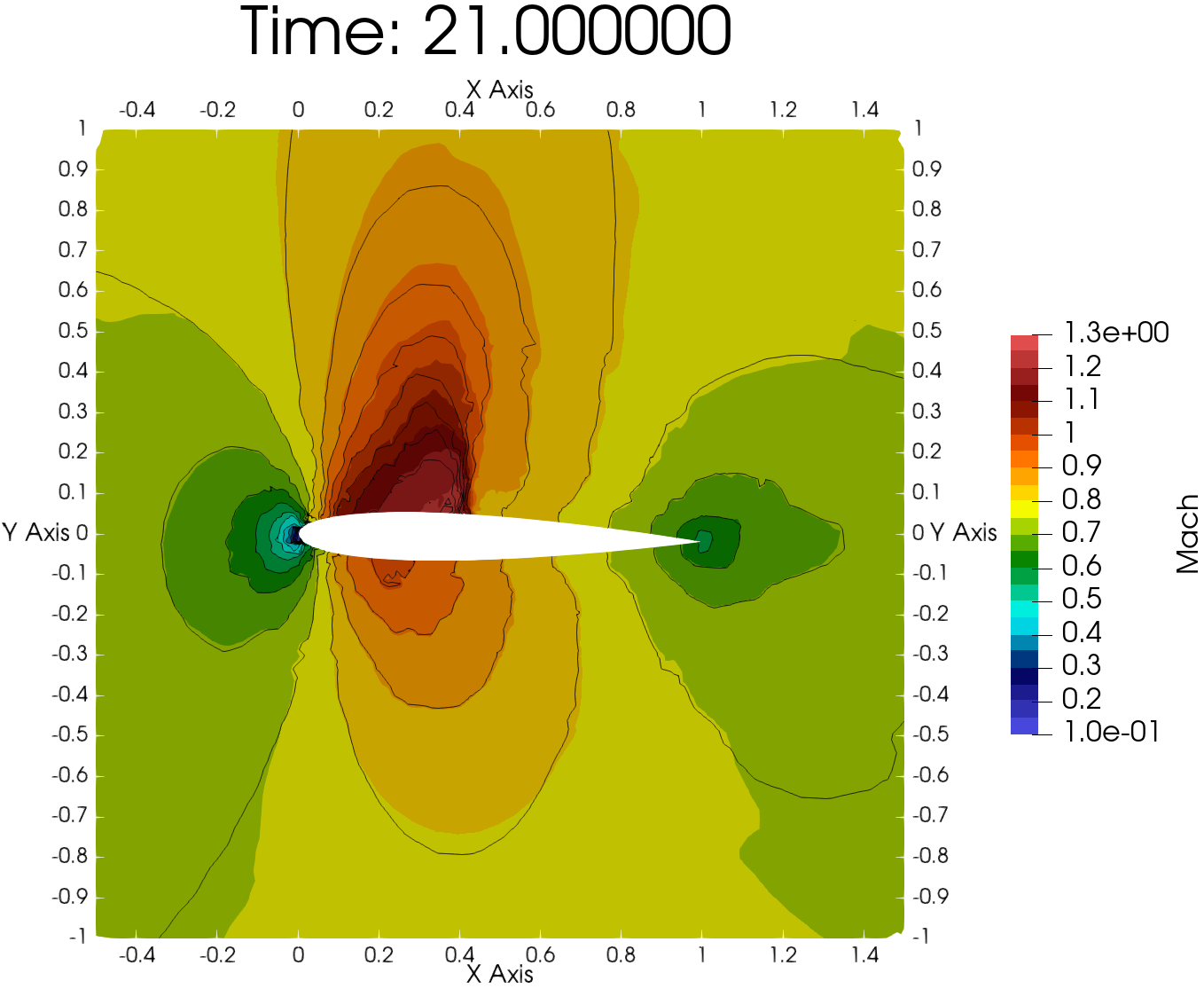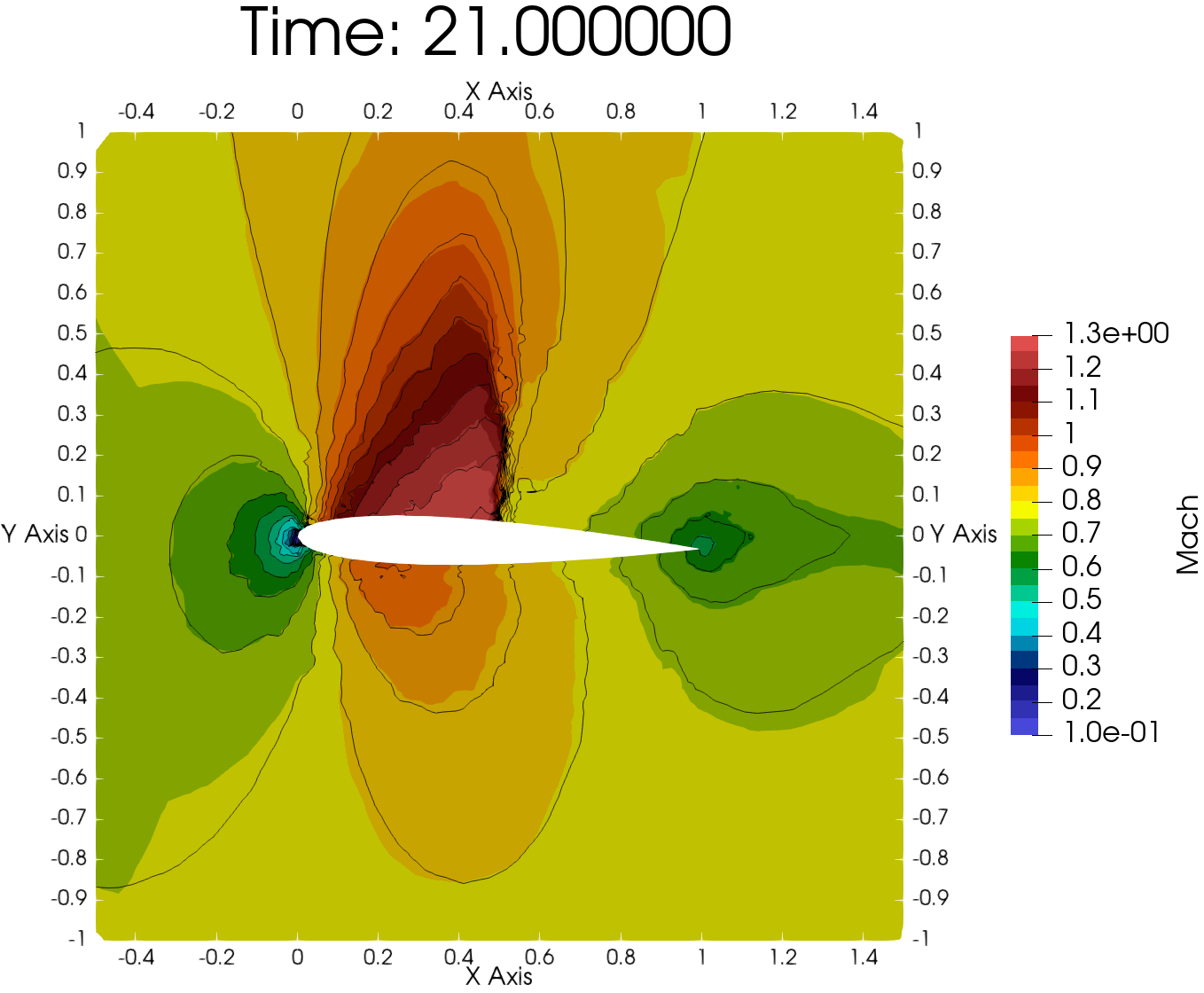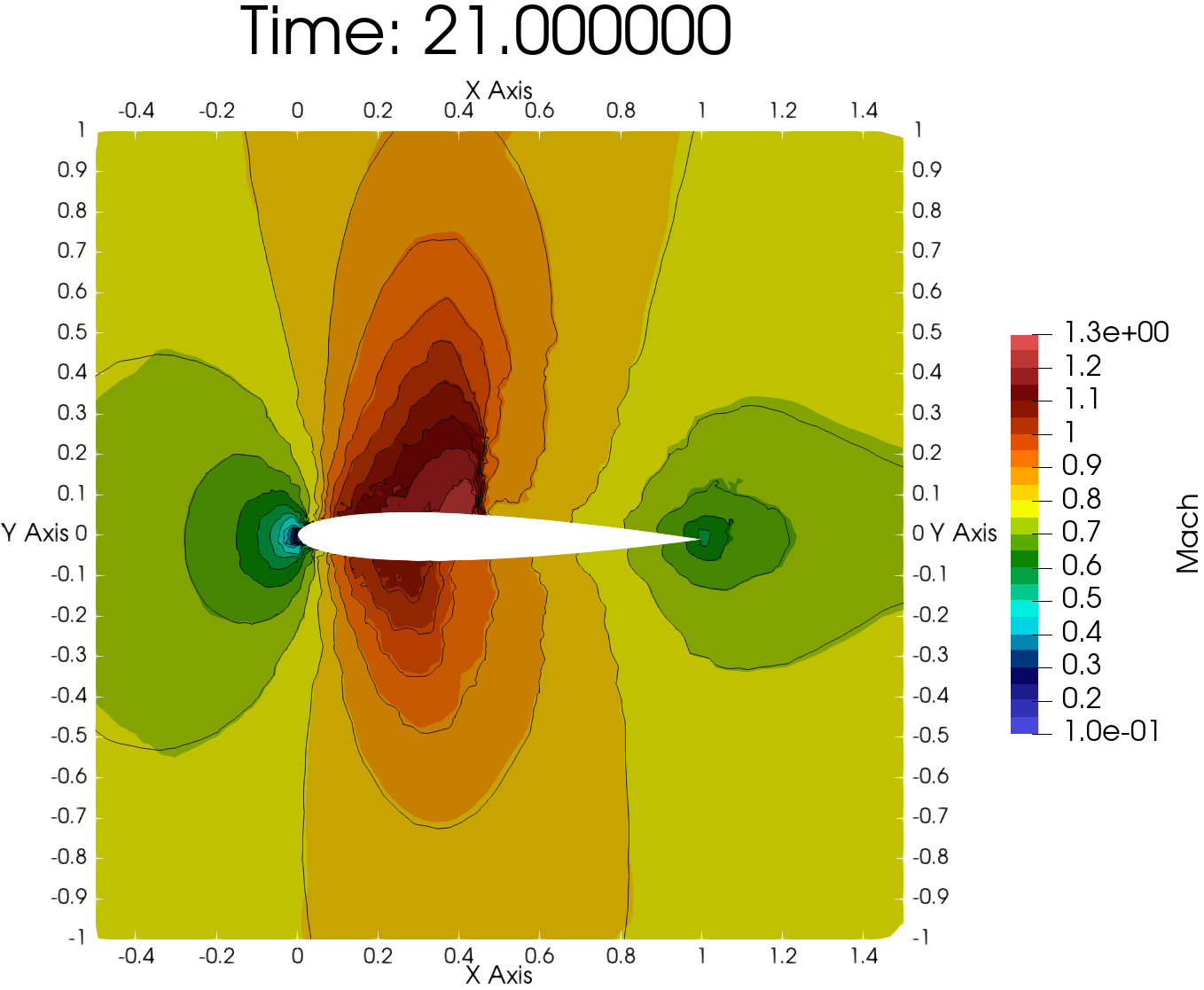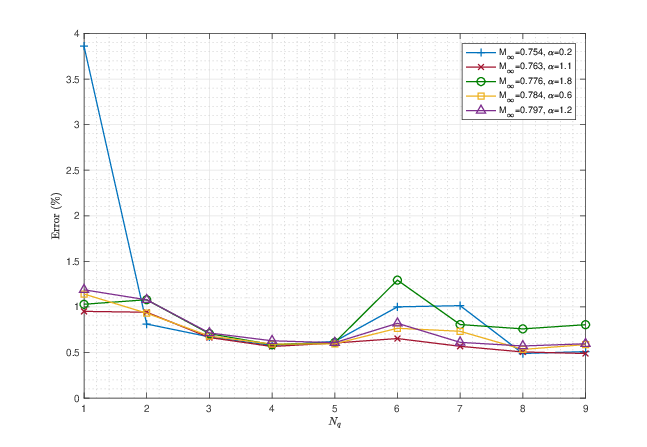Section: New Results
DGDD Method for Reduced-Order Modeling of Conservation Laws
Reduced-order models are attractive method to decrease significantly the computational cost of the simulations. However, the ability of reduced-order models to accurately approximate solutions containing strong convection, sharp gradients or discontinuities can be challenging. The discontinuous Galerkin domain decomposition (DGDD) reduced model for systems of conservation laws couples at the discrete level sub-domains of high-fidelity polynomial approximation to regions of low-dimensional resolution as shown in figure 8.
In this approach, the high-dimensional model solves the equations where a given degree of accuracy is required, while the reduced-order model approximates the solution elsewhere. Since the high-dimensional model is used in a small part of the domain, the computational cost is significantly reduced. To perform the coupling, we develop a reduced-order model based on Proper Orthogonal Decomposition in the offline stage and on discontinuous Galerkin method in the online stage instead of the standard Galerkin method. In this way, the domain decomposition is applied transparently thought the numerical fluxes. We investigate the prediction of unsteady flows over a NACA 0012 airfoil. The results demonstrate the accuracy of the proposed method and the significant reduction of the computational cost. In the figures (9 and 10) we show examples of predictions obtained by the low-order model compared to the actual solutions as a function of the Mach number at infintiy and the angle of attack. In the last figure we present the overall space-time errors as a function of the low-dimensional space size.



